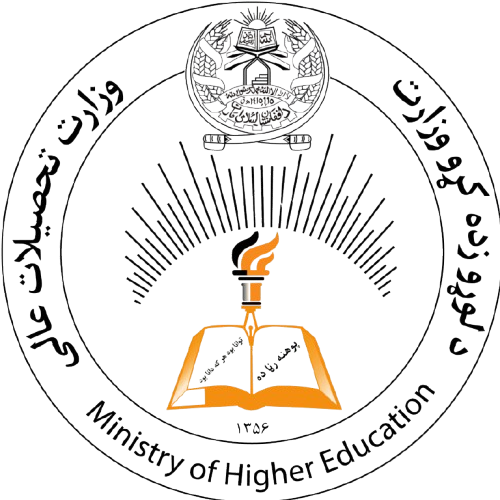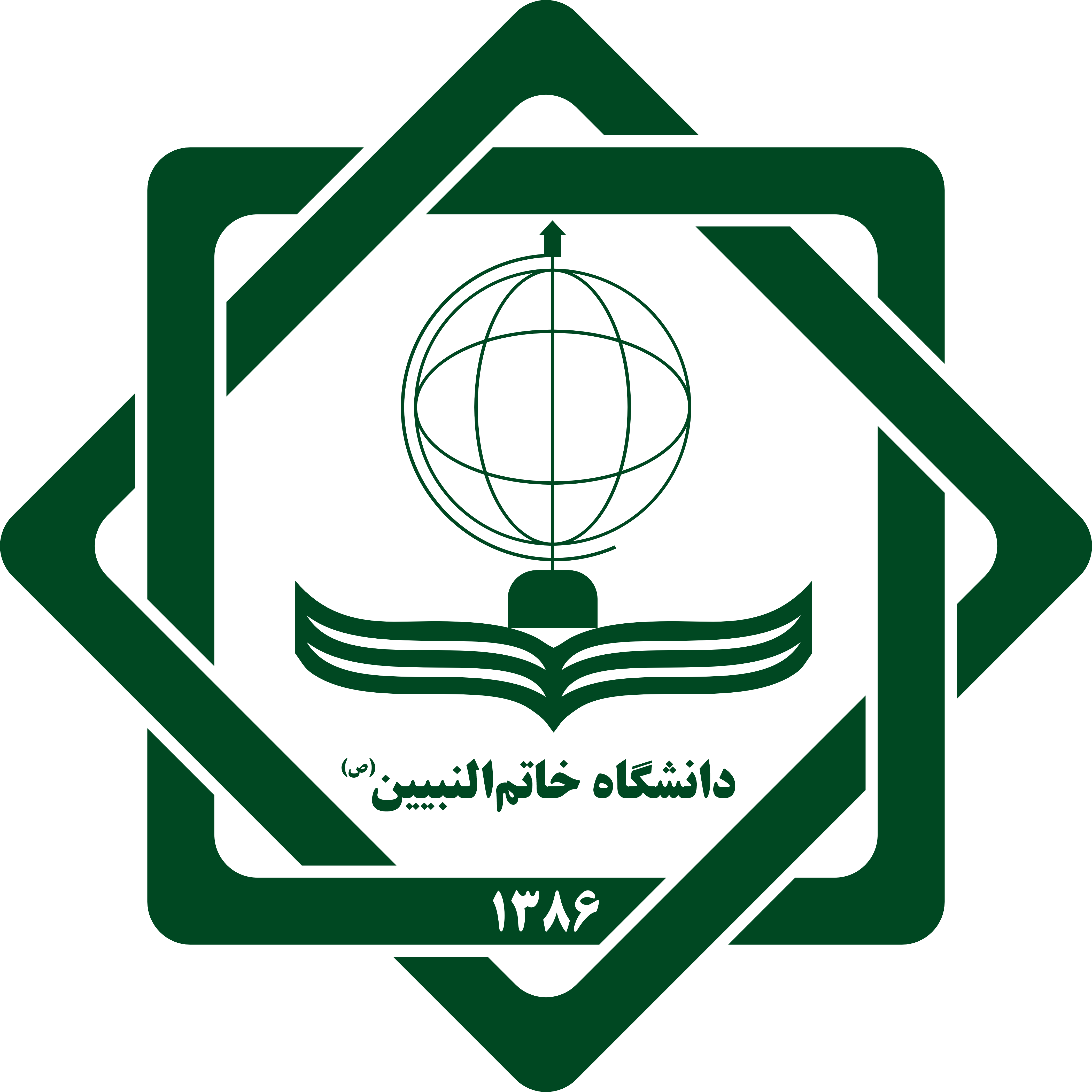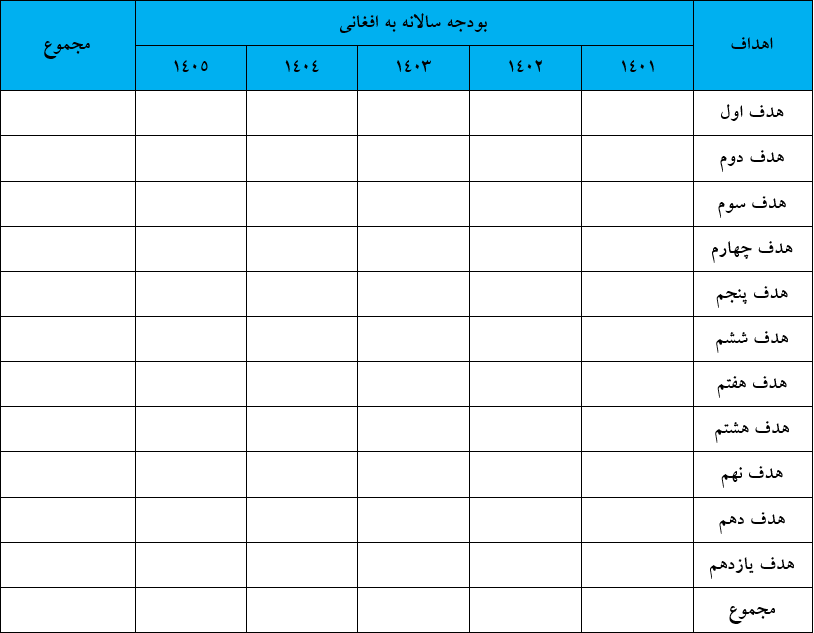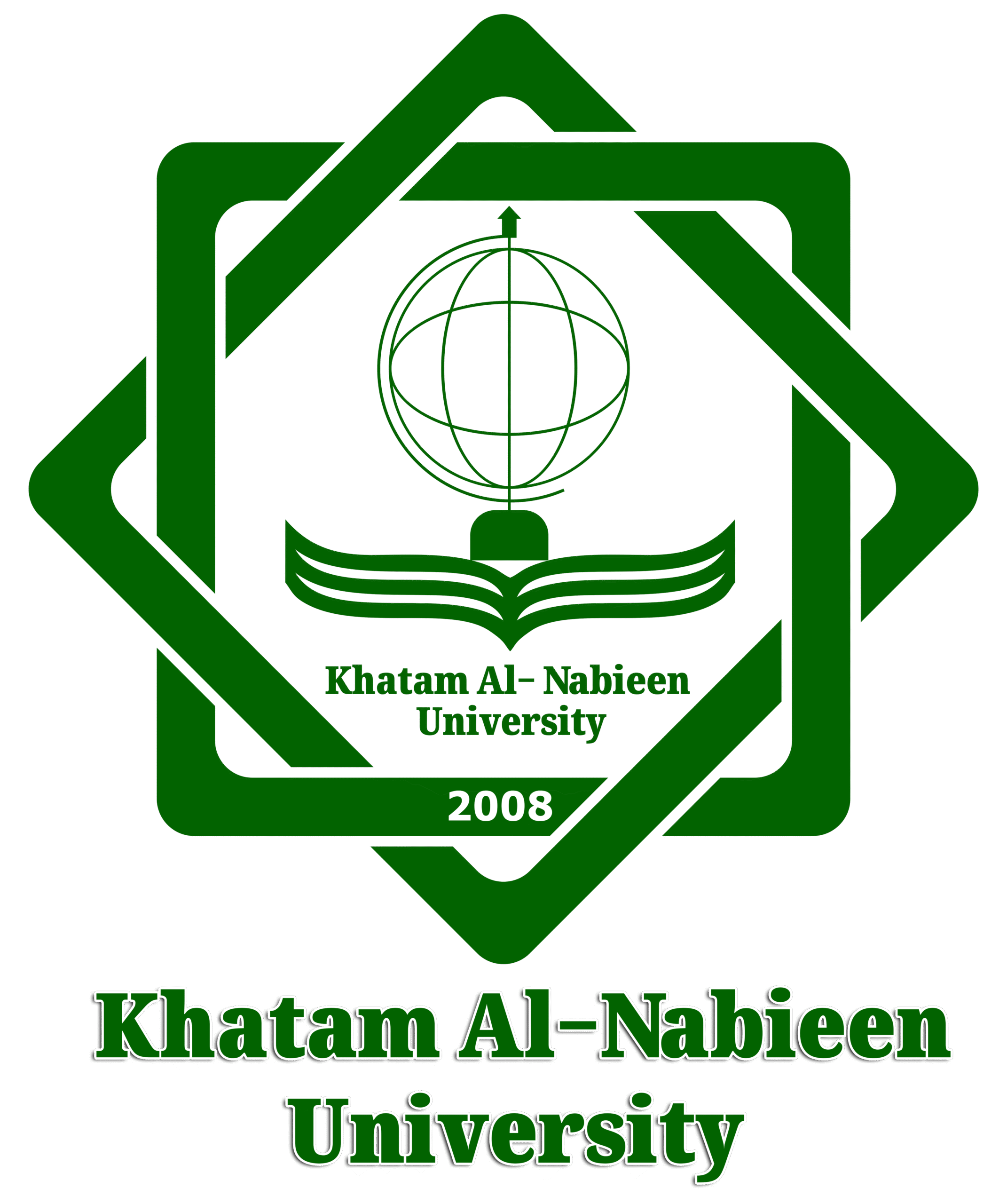University Strategic Plan

Islamic Emirate of Afghanistan
Ministry of Higher Education
Khatam Al-Nabieen (PBUH) University

University President Message
The growth and scientific flourishing of nations form the foundation of development and social progress and are among the shared values of the human society. Based on scientific findings and the practical experience of developed societies, human and financial capital are the two fundamental pillars of development and social progress. However, among these, the role of human capital and committed, skilled professionals holds greater importance and a superior position. This significance reflects the vital and fundamental role of scientific research in the process of development and social progress. A workforce equipped with modern expertise and knowledge, along with commitment and adherence to religious and national values, plays a crucial role in navigating this challenging path. The provision and assurance of human capital for development is the most important mission of scientific and academic institutions in the present era. Khatam Al-Nabieen (PBUH) University, with a deep understanding of the effective and constructive role of human capital, considers the training of committed and specialized professionals as its most important religious mission and national responsibility. Since its establishment, it has taken significant and valuable steps in this regard.
Without a doubt, in the era of globalization and the explosion of information and knowledge, an effective and progressive movement to provide human capital and ensure national development and progress requires long-term planning, a visionary approach, and overcoming short-termism. The current five-year strategic plan, which envisions the high position of this academic center in the horizon of 2026, is of serious necessity for the coordination of programs, consolidation of capacities, and effective and constructive management of academic affairs. This plan also liberates the university from daily routine, confusion, and stagnation, and helps in pursuing and ensuring long-term goals, maintaining core principles and values, and ultimately achieving academic missions successfully. The university’s strategic plan also provides the path for the effective movement and activities of this institution to achieve a superior and distinguished position among other universities in the country. We believe that with trust in God and the efforts of our scholarly and diligent colleagues, by implementing this plan, we will witness the glory and continuous growth of this great and cherished academic center. I express my gratitude to all the dear colleagues who contributed to the formulation of this plan and ask for the continuous success of everyone from the knowledgeable and capable God.
And my success is only through Allah; upon Him I rely, and to Him I turn.
Dr. Sayed Abdul Qaium Sajjadi
University President
Strategic Plan Structure
The structure of the university’s strategic plan is as follows:
Part One: General Overview;
Part Two: Visionary Domains;
Part Three: Environmental Analysis and Strategies;
Part Four: Goals, Strategies, Annual Performance Indicators;
Part Five: Implementation, Monitoring, and Evaluation;
Part Six: Appendices (Annual Operational Plans and Compilation Evidence).
Part One: General Overview
Introduction
Strategic management is a process that begins with a forward-looking vision and perspective, precedes the determination of priorities and goal-setting, and involves planning. After implementing the plans, it evaluates the results and, through a results-oriented feedback system, rethinks priorities and goals based on the outcomes achieved. Therefore, the importance and necessity of strategic planning in modern organizations and institutions are undeniable, as strategic planning sets the organization’s goals in line with its mission and identifies opportunities, threats, weaknesses, and strengths through environmental studies. This enables the establishment of more realistic goals and their effective implementation.
Khatam Al-Nabieen University (PBUH), recognizing the aforementioned necessity, has formulated its second strategic plan for the horizon of 1405 (2026) in light of the criteria and guidelines of the Ministry of Higher Education of Afghanistan. This plan consists of six sections: “General Overview,” “Visionary Domains,” “Environmental Analysis and Strategies,” “Goals, Strategies, Annual Performance Indicators,” “Implementation, Monitoring, and Evaluation,” and “Appendices (Annual Operational Plans and Compilation Evidence).” In the “General Overview” section, the university is introduced in terms of its establishment history, educational and research services, structure and organization, equipment and facilities, human resources, and achievements. Additionally, the necessity of strategic planning and the methodology used to develop the strategic plan, which was based on a review, problem analysis, and current positioning of the university conducted by a working team of experienced and knowledgeable professors, is discussed in this section.
University Introduction
Khatam Al-Nabieen University (PBUH) is one of the prominent private universities in the country, established in 1386 (2007) under the supervision of the esteemed jurist of the nation, Ayatollah Mohammad Asif Mohseni (RA), and through the efforts and dedication of a group of intellectuals. After obtaining the official license from the respected Ministry of Higher Education of Afghanistan, this academic institution held its first entrance exam in the spring of 1387 (2008) to admit students in the field of Jurisprudence and Law, officially commencing its academic and scientific activities. Over the course of more than fourteen years of academic activity, Khatam Al-Nabieen University (PBUH) has been able to establish itself as a standard academic center with scientific and social credibility.
Khatam Al-Nabieen University (PBUH), with its diverse academic disciplines across three scientific groups—social sciences, technical sciences, and medical sciences—has played a significant role in training specialized and committed professionals. The graduation of 4,056 students at the bachelor’s level and 993 students at the master’s level represents only a portion of this university’s academic achievements. Currently, around three thousand students are pursuing their studies at the bachelor’s and master’s levels in faculties such as Jurisprudence and Law, Social Sciences, Computer Science, Medical Technology, Engineering, Midwifery, Stomatology, Curative Medicine, and Economics, as well as departments including Jurisprudence and Law, Quranic Sciences, Sociology, Information Technology, Software Engineering, Civil Engineering, Electrical Engineering, Business Economics, and Management Economics.
The recruitment and employment of over sixty full-time professors with specialized doctoral and master’s degrees as part of the university’s academic staff, collaboration contracts with more than 150 capable part-time and contractual professors, and the presence of experienced and committed employees are among the strengths of this academic institution. Alongside a capable workforce, administrative capacity, a digital system, standard infrastructure, and well-equipped laboratories are other capacities of this university.
Relations with Academic Institutions
Khatam Al-Nabieen University (PBUH), aiming to exchange scientific experiences, create study opportunities, and expand educational and research collaborations, has taken steps to develop academic relations with other higher education institutions both within and outside the country. To this end, Khatam Al-Nabieen University (PBUH) has been able to sign scientific memorandums of understanding with over 60 higher education institutions within and outside the country, including Indonesia, China, India, and Iran, and has established the groundwork for scientific collaborations at national and international levels. Organizing joint scientific seminars and fostering educational and research collaborations to achieve the university’s strategic goals are among the outcomes of implementing these scientific agreements.
Success in Ministry Evaluations
Khatam Al-Nabieen University (PBUH), after successfully completing three graduation cycles in various disciplines, was promoted from an “Institute of Higher Education” to a “University” by the Ministry of Higher Education in the winter of 1391 (2012). Simultaneously, it obtained permission to offer master’s programs in three fields (Criminal Law and Criminology, International Law, and International Relations) and also secured approval to establish a university branch in the center of Ghazni Province. All these achievements were realized after meeting the scientific and administrative criteria set by the ministry and following a scientific evaluation by the Ministry of Higher Education.
From its establishment in 1386 (2007), this university adopted the motto of “Expertise and Commitment” as a practical guideline for its academic activities and made dedicated efforts to train committed and specialized professionals. In 1391 (2012), Khatam Al-Nabieen University (PBUH) was nominated by the Ministry of Higher Education to undergo the quality assurance and accreditation process and took responsible and serious steps to provide standard educational and research services. This academic institution was able to secure the second rank among numerous universities in the country during the second phase of evaluation in 1395 (2016) by the Ministry of Higher Education. By successfully meeting the formal and substantive conditions of quality assurance, it ultimately passed the third phase of scientific evaluation in 1399 (2020) and received the scientific accreditation certificate from the respected Ministry of Higher Education.
Educational-Research and Administrative Facilities
Khatam Al-Nabieen University (PBUH), in addition to providing high-quality and standard education, considers participation in community development as its mission and focuses its scientific and service activities in the fields of scientific research, health services, and addressing the scientific needs of society with the aim of contributing to national development. Publishing research articles, printing and publishing textbooks, and organizing scientific conferences and congresses are among the research activities of Khatam Al-Nabieen University (PBUH).
A suitable and standard educational environment, standard classrooms equipped with educational facilities, organized administrative offices, a library with a standard study hall and a digital library, research laboratories, a conference hall for scientific gatherings and meetings are among the educational and research facilities of this academic center. The total educational, administrative, and research space of the university includes a 4-story teaching building with 49 classrooms and a separate administrative building with over 30 offices. The university library includes a physical book repository, a dedicated section for the digital library, a study hall, and a designated area for publications, journals, and newspapers, covering an area of 250 square meters. The university’s dedicated parking lot, covering an area of one and a half acres of land, is another facility of this academic center.
Khatam Al-Nabieen University (PBUH), emphasizing the fundamental importance of research activities and practical training for students, has seriously considered the research and educational laboratories required by professors and students. To this end, it has prepared and equipped a set of necessary laboratories for medical and technical sciences as follows.
a) The medical sciences section has a total of 14 different laboratories in various fields of medical sciences, including: electrophysiology laboratory, molecular laboratory, biochemistry laboratory, behavioral studies laboratory, and animal testing laboratory.
b) The technical sciences section includes five laboratories: Cisco, software engineering, soil and concrete mechanics, electrical, and physics laboratories for students in civil engineering, electrical engineering, and computer science disciplines.
c) The Khatam Al-Nabieen (PBUH) Teaching Hospital was established in 1392 (2013) with modern medical equipment and facilities to conduct the scientific internship period for medical students. The Khatam Al-Nabieen (PBUH) Teaching Hospital is the first staff hospital among private universities that, in addition to providing practical training for medical students, offers curative services in internal medicine, pediatrics, and surgery to the general public. For the first time, this hospital established a kidney transplant unit in the country, and so far, dozens of successful kidney transplants have been performed at this hospital.
Part Two: Visionary Domains
Vision
Khatam Al-Nabieen (PBUH) a University by utilizing efficient sources, advanced educational system, research and providing transparent and standard administrative services, aims to have prestigious position in educating committed, expert and pioneer human resources produce science and education, and be among nationally and internationally accredited university by 2027.
چشمانداز
«پوهنتون خاتمالنبیین(ص) در افق ۱۴۰۵ بر آن است تا با استفاده از نیروی کارآمد، نظام تحصیلی پیشرفته، تحقیقات و ارائه خدمات معیاری و اداری شفاف، جایگاه ممتاز در تربیت نیروی انسانی متعهد، متخصص و پیشرو در تولید علم و آموزش در سطح کشور داشته، جزء پوهنتونهای معتبر در سطح ملی و بینالمللی باشد».
Mission
Khatam Al-Nabieen (PBUH) University with having experienced professors and standard equipment, strives to educate professional and committed youths, and have effective part in national development through education, research and scientific activities.
مأموریت
«پوهنتون خاتمالنبیین(ص) با برخوداری از اساتید با تجربه و تجهیزات معیاری برای تربیت جوانان متعهد، مسکلی و انکشاف ملی از طریق آموزش، تحقیق و فعالیتهای علمی تلاش مینماید».
Values of Khatam Al-Nabieen University (PBUH)
The values of the university, as “guiding principles in attitudes, decisions, and behaviors,” after exploratory studies, group discussions, and receiving the views of the members of the [Plan Drafting Committee], are represented in this statement: “Adherence to religious teachings, preservation of human dignity, knowledge-centricity, strengthening national identity, observance of fair standards, emphasis on academic freedoms, and social responsibility.”
Concepts of the Values Statement
- Adherence to Religious Teachings: Moving in the Path of Monotheistic Principles and the Conduct of Religious Leaders;
- Preservation of Human Dignity: Directing Educational Services Towards the Inherent Respect and Acquired Honor of Humans as God’s Vicegerents;
- Knowledge-Centricity: Valuing the Production of Knowledge (Processing New Theories and Skills), Expansion of Knowledge (Increasing the Scope of Existing Knowledge and Skills), and Honoring Scholars and Seekers of Knowledge;
- National Identity: Strengthening National Character, Consolidating National Unity, and Promoting the Authentic Values of Afghan Culture;
- Observance of Fair Standards: Striving for the Standards of Cooperation and Justice, Contentment with One’s Rights, and Respect for the Rights of Others;
- Academic Freedom: Welcoming the Presentation of New Solutions and Works, and Truth-Seeking Theorization Without Fear or Concern;
- Social Responsibility: A Conscientious Endeavor in Fostering Healthy Individuals and a Wholesome Contribution to the Piety and Advancement of Society.
Strategic Goals of Khatam Al-Nabieen University (PBUH)
Considering the mission, vision, and values of Khatam Al-Nabieen University (PBUH) and the goals of the National Strategic Plan of the Ministry of Higher Education, which are determined based on the priorities of the Islamic Emirate of Afghanistan, the target areas and strategic goals of the university can be outlined as follows:
- Development of Research, Production of Knowledge, and Innovation,
- Administrative Reforms, System Establishment, and Combating Administrative Corruption within the Institution,
- Review and Development of Curricula for New Disciplines,
- Enhancement and Improvement of University Quality Based on the Quality Assurance and Accreditation Standards of the Ministry of Higher Education,
- Development and Improvement of E-Learning,
- Development and Improvement of Infrastructure,
- Capacity Building,
- Review, Amendment, and Development of University Technical Documents in Light of the Legislative Documents of the Ministry of Higher Education,
- Improvement and Expansion of Relations with Academic and Non-Academic Institutions,
- Increasing Equitable Access to Higher Education,
- Contributing to Community Development and Progress.
Part Three: Environmental Analysis and Strategies
A realistic description of the current situation and the depiction of the desired situation are two fundamental bases for strategic planning. The realization of these two important aspects is achieved through the analysis of environmental factors, including internal and external environments, which are crucial for extracting strategies. Identifying and extracting environmental factors in both internal and external environments include the organization’s strengths, weaknesses, opportunities, and threats. A combined method, integrating quantitative and qualitative approaches, has been used to analyze the operational environment and extract strengths, weaknesses, opportunities, and threats.
Identification and Selection of University Strategies
After analyzing internal and external factors and determining the current position of the university, SWOT matrix analysis has been used to extract possible strategies, and the Quantitative Strategic Planning Matrix (QSPM) has been used to evaluate and select desirable strategies. A combination of various columns containing strengths, weaknesses, opportunities, and threats has resulted in a set of existing and possible strategies. To extract these strategies, an interactive method and brainstorming in several group discussion sessions have been used. Ultimately, the following strategies have been identified and selected based on the university’s goals:
First Goal: Development of Research, Production of Knowledge, and Innovation
- Quantitative and Qualitative Expansion of Research Activities
Second Goal: Administrative Reforms, System Establishment, and Combating Administrative Corruption within the Institution,
- Transparency, Simplification, and Greater Efficiency of Administrative and Financial Processes
- Continuous Improvement of Human Resources
- Expansion and Improvement of Educational Services
Third Goal: Review and Development of Curricula for New Disciplines,
- Integration of Knowledge and Skills
Fourth Goal: Enhancement and Improvement of University Quality Based on the Quality Assurance and Accreditation Standards of the Ministry of Higher Education,
- Institutionalization of Monitoring and Evaluation of Educational, Research, and Administrative Processes
- Expansion of Member Participation in University Programs and Decision-Making
- Expansion of University Cultural Activities
Goal Five: Development and Improvement of E-Learning
- Preparation for Virtual Learning Courses
- Effective Management of Practical Training Facilities
Sixth Goal: Development and Improvement of Infrastructure,
- Preparation for Permanent Construction
- Expansion of University Revenue Sources
- Management of the Teaching Hospital
- Establishment of a Growth and Entrepreneurship Center (Expanding Relations with Entrepreneurs and Supporting National Development)
Seventh Goal: Capacity Building,
- Standardization of Educational Programs
Eighth Goal: Review, Amendment, and Development of University Technical Documents in Light of the Legislative Documents of the Ministry of Higher Education,
- Greater Harmonization of University Regulations with the Laws and Regulations of the Ministry of Higher Education
Ninth Goal: Improvement and Expansion of Relations with Academic and Non-Academic Institutions,
- Enhancement of Information and Promotional Activities
- Strengthening the Positive Image of the University in the Public Mind (Reducing the Perception of Dependence on a Specific Country)
هدف دهم: Increasing Equitable Access to Higher Education,
- Provision of Facilities and Services for Women
- Quantitative and Qualitative Expansion of Students
- Expansion of Master’s and Doctoral Programs and Disciplines
- Preservation and Strengthening of Existing Disciplines
Goal Eleven: Contributing to Community Development and Progress
- Strengthening Participation in Community Development
- Organizing Financial Support for Needy and Deserving Students
Part Four: Goals, Strategies, Annual Operational Indicators
In the strategic plan, it is necessary to determine a set of strategies corresponding to the university’s long-term and strategic goals, prioritize them, and specify operational indicators, timelines, and required budgets logically and appropriately. In the table below, each of the university’s strategic goals, appropriate and prioritized strategies, activities, and operational indicators along with timelines and required budgets are presented. Considering the university’s eleven goals, the relevant indicators and activities to be implemented and applied over five years are organized and arranged in the form of an annual operational plan.

Financial Plan
Just as the strategic plan is developed based on the analysis of the current situation and the depiction of the desired situation, the proposal of specific operational programs aimed at possible strategies should also be presented considering the financial conditions and resources of the organization. In the table below, the allocated financial resources and budgets for each strategic goal are proposed.

Part Five: Implementation and Evaluation of Strategies
Having a coherent, clear, and effective plan is crucial for the dynamism and growth of an organization. The effectiveness of the plan depends on its comprehensiveness, validity, and efficiency. By comprehensiveness, it is meant that the strategic plan, in addition to proposing strategies and operational indicators, should also define and anticipate specific mechanisms for implementation, monitoring, and evaluation of program compliance. This section includes the main axes of “implementation” and “evaluation.”
Principles of Implementation
The implementation of the strategic plan goes beyond mere action and includes fundamental principles such as a shared understanding of long-term goals, coordinated planning, collaboration, and innovation.
Timing and Executors of Monitoring and Evaluation
The main executor of monitoring and evaluation of this plan is the University-Level Plan Evaluation Committee, which conducts the evaluation of the strategic plan and strategies based on the principles and criteria outlined in this section. The committee prepares and approves the monitoring and evaluation mechanism and implements it. The committee’s monitoring of plan implementation is continuous and quarterly, but the analytical evaluation report on plan compliance is prepared at the end of each year. At each stage, a report on the progress level and the reasons for non-implementation or improper implementation of strategies is prepared.
The university units and the Quality Assurance Directorate are permanent collaborators of the committee in their respective areas, assisting in the tasks of monitoring, controlling, and evaluating programs.
